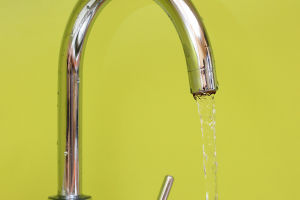In developed countries, such as Japan and Germany, the domestic waste classification policy has been implemented in the late last century.
Taking Japan as an example, it adopts the model of "fine classification at the source and high-quality disposal in the whole process" of domestic waste.
Although it is roughly divided into two categories: combustible and non-combustible, the classification of recyclable garbage is very detailed, and it can even be described as cumbersome. Even glass bottles need to be placed in different colors.
Different countries adopt different waste classification standards, and the basis for determining waste classification depends on the back-end processing and utilization facilities. In other words, what kind of facilities are available will classify and dispose of garbage accordingly.
For example, Japan mainly adopts garbage incineration, so it is divided into combustible and non-combustible. Germany mainly processes biomass, so organic waste is separated.
When many students go abroad to study, the first lesson they need to take is to learn "how to dispose of garbage". For example, Japan, South Korea, and other countries have the relatively fine-grained waste classification, and many European countries have done relatively well in waste classification.
For example, Italy publishes a garbage sorting calendar every year, and Germany has a special "garbage police". For example, different garbage should be discarded on different dates or time periods, etc., all of which need to be learned locally.
When it comes to garbage sorting, the first thing many people think of is Japan. In 1970, the Japanese government launched a large-scale garbage sorting and recycling campaign starting from the source of garbage. However, it was not until 1980 that garbage sorting was promoted among the Japanese people.
The main classification method of domestic waste in Japan is divided into two categories: combustible and non-combustible, and further refined on this basis.
Among them, there is a category called resource waste, which corresponds to recyclable waste, which is very finely divided, and all materials in the waste must be strictly classified. For example, plastics should be made according to different qualities, and glass should be made according to different colors.
Most of the milk and beverages in Japan are packed in cartons. After drinking, they must be washed with water, then cut open, dried in the sun, and finally processed accordingly.
At the same time, oversized waste in Japan must be divided according to specifications, and corresponding fees must be paid before it can be collected.
According to media reports, the garbage classification manual in Yokohama, Japan has 27 pages and 518 items. The meticulous regulations and rigorous operation are amazing.
As a representative country of waste classification in Europe, Germany's waste classification has also been doing very well.
The waste in daily life in Germany can be roughly divided into six categories: organic waste, light packaging, paper, toxic waste, waste glass, and other waste.
Some categories also require further subdivision, such as glass can be divided into three types: white, green, and brown glass. Hazardous waste such as batteries and bulky items also need to be thrown in designated locations.
Germany promulgated the "German Packaging Regulations" in June 1991. According to its regulations, the recovery, reuse, and recycling of all disposable packaging (including imported product packaging) should not be responsible for the public waste management system but should be relevant industries are responsible.
At the same time, Germany has also set up a special company to help manufacturers recycle product packaging to reduce recycling costs for manufacturers.
In addition to Japan and Germany, South Korea, the United States, Singapore, and other countries also have their own classification standards and classification models for waste classification.


